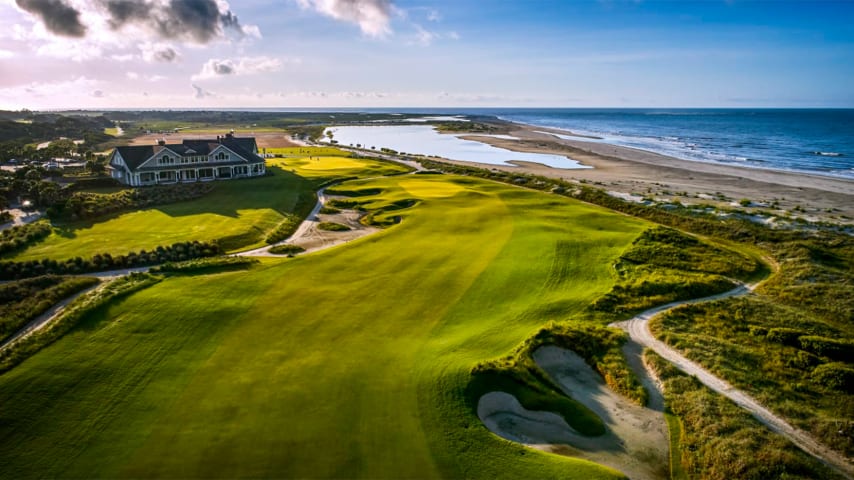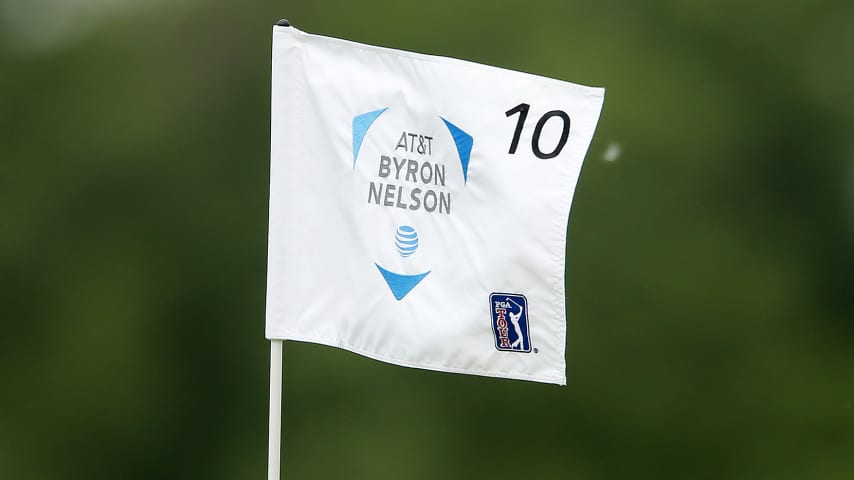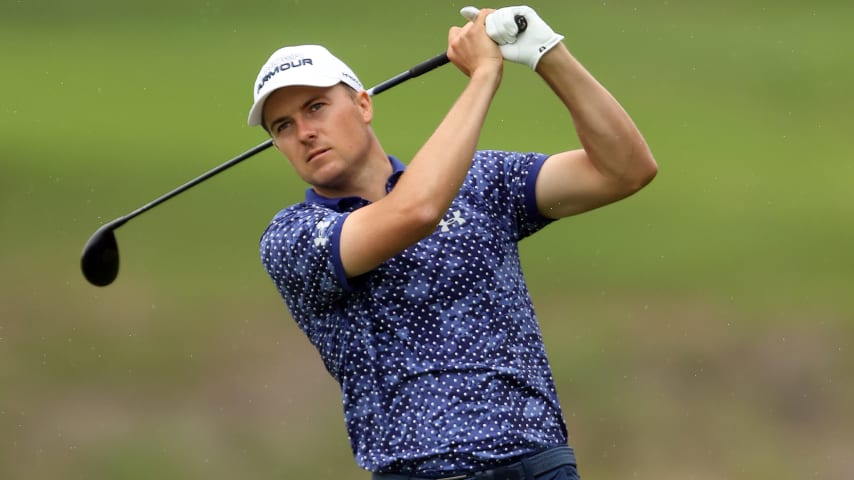Nine Things to Know: Kiawah Island
11 Min Read

Written by Sean Martin
The PGA Championship returns to Kiawah Island this week. The Ocean Course, designed by Pete and Alice Dye, is known for both its beauty and its brawn.
With a scorecard yardage of 7,876 yards, it will be the longest major venue in history. It is 135 yards longer than the previous record holder, Erin Hillls, the host of the 2017 U.S. Open.
Golf Digest has also declared the Ocean Course the most difficult in the country.
“The Ocean Course, strung along the Atlantic coastline with fairways and greens perched above sand, sea oats and sweetgrass, is perhaps (Dye’s) most Dye-abolical design,” the magazine wrote. “With forced carries over marshes (and) endless waste bunkers, … the Ocean is a rare course that can bring tears and fears even to TOUR pros.”
This is the second time the oceanfront gem will host this championship. Rory McIlroy romped to an 8-shot win at Kiawah in 2012. The course also hosted one of the most hotly-contested Ryder Cups in history.
“Strategically, it is an absolute masterpiece,” said Paul Azinger, a member of the 1991 U.S. Ryder Cup team. “There are some holes out there that can just completely end your hopes.”
With that said, here are Nine Things to Know before the PGA Championship gets underway at Kiawah Island’s Ocean Course:
1. IN THE BEGINNING
Dye wrote in his autobiography that he immediately fell in love with the site for Kiawah Island, calling it “one of the greatest pieces of seaside property in the United States.”
“The combination of the magnificent Atlantic Ocean on one side and the vast saltwater marshes on the other captivated me,” he wrote.
How good was the land? Kiawah Island was awarded the Ryder Cup before the course was built. The matches were originally scheduled to be held at another Dye design, PGA West’s Stadium Course, but were moved to the East Coast to better suit television audiences in Europe.
“For the first time in history, the heralded event had been awarded to a course that did not exist and there was less than two years to build one worthy of the event,” Dye wrote.
His team didn’t get permission to begin clearing land until July 1989. Hurricane Hugo hit that October, delaying a construction process that was already working on a tight timetable. Many doubted that the course would be in suitable condition for the matches. That only inspired everyone involved in the construction, Dye said.
The team worked 18-hour days, often under lights after the sun had set, to complete the course on time. The course was planted in July 1990, almost exactly a year after the groundbreaking.
2. BEAUTY
The Ocean Course is built on a 2 ½ mile stretch of beachside property located about 30 miles from Charleston, South Carolina. With no homes allowed on site because of environmental restrictions, Dye said he was like a “kid with a lollipop” because of the flexibility that gave him to create the course he desired.
Dye built the course in a figure-8 design, with the front nine looping clockwise to the east and the back nine looping counterclockwise to the west. That layout allows Kiawah Island to have more oceanfront holes (10) than any course in the North America.
“It looks like God designed it,” said Dave Stockton, the U.S. captain in the 1991 Ryder Cup at Kiawah Island. “It’s just a natural creation.
“It’s great to see a … golf course that’s not trying to fit between a freeway and a housing project.”
3. AND THE BEAST
In his autobiography, Dye started the chapter on Kiawah Island with a quote from course architect John L. Low.
“A good player prays for wind every day, but he must not pray too earnestly,” Low said.
It’s a fitting quote because in return for the scenic views, players often face strong, and unpredictable, winds at the Ocean Course.
During construction, Dye discovered there was no prevailing wind on Kiawah Island. It could blow from different directions on consecutive days. It required Dye to design an adaptable course.
“We were in effect building two golf courses since the direction of the wind could require a long approach one day and a short on the next,” Dye wrote.
He did this by building greens that were 40-50 yards deep and could accept shots with a variety of trajectories. He also built long tees that would allow a hole’s yardage to vary greatly day-to-day.
Players saw first-hand at the 1991 Ryder Cup how differently the course can play. The wind blew from the southeast during the practice rounds but came from the opposite direction once the competition began.
“All of the finishing holes, which had been downwind the day before would suddenly be played against a stiff breeze,” Dye wrote. “At the par-3 14th, the competitors were hitting 2- and 3-irons where the day before they had used a 7 or 8. At 18, what had been a 5- or 6-iron approach shot downwind to the green now became a long-iron or rescue club shot.”
4. BEAUTY AND THE BEAST (PART 2)
Alice Dye played an integral part in many of her husband’s designs. Kiawah Island’s Ocean Course is no exception.
A ridge of sand dunes blocked views of the beach, so Alice convinced Pete to raise the fairways six feet so golfers could see over the sand.
“You’re building a course right next to the ocean but the golfers can’t see it!” she said.
They used the sand dug out from lakes and pockets around the course to raise the fairways.
“Thanks to Alice, golfers can enjoy watching the tide roll in and out, experiencing the beautiful Kiawah island coastline,” Pete Dye wrote. Improving the views also increased the course’s exposure to the wind, and some of the dramatic drop-offs increased the penalty for off-line shots.
“It does look like a links golf course, there is no question about it, but the difference is many of the greens are built up into the air, where you can’t really run the ball on,” said David Feherty, who played the 1991 Ryder Cup at Kiawah Island. “When you are faced with a shot that you have to keep the ball down (because of the wind) but you have to get it up in the air to make it stop, that’s really the difficulty.”
5. RORY’S ROMP
The PGA Championship also visited the Ocean Course in 2012. Rory McIlroy won by eight shots. He broke Jack Nicklaus’ record for largest winning margin in the PGA and became the only player besides Tiger Woods to win multiple majors by eight or more shots since World War I.
McIlroy’s PGA win came a year after he won the U.S. Open by eight shots. Winning at Kiawah got him back to No. 1 in the world. He was the youngest player to win two majors since Seve Ballesteros (Tiger Woods was about four months older when he won his second major).
McIlroy was two back after shooting 67-75 in the first two rounds but his closing two rounds of 11-under 133 (67-66) was best in the field by three shots. He finished the rain-delayed third round Sunday morning, making birdies on Nos. 15 and 16 to take a three-shot lead. No one got closer than two strokes the rest of the way. He was bogey-free over his final 23 holes.
“It's been great to win my first major last year and to back that up with another one this year; I can't ask for any more,” he said after the win. “I just want to keep working hard, keep practicing, and hopefully there's a few more of these in my closet when my career finishes.”
McIlroy arrives at this year’s PGA on a winning note. He was victorious in his last start, the Wells Fargo Championship, to end an 18-month winless drought. It was his 19th PGA TOUR victory. After winning two majors before turning 24, McIlroy has won just two in the nine years since. Both came in 2014, when he won The Open Championship and PGA in a span of three weeks. He’s also won two FedExCups and a PLAYERS championship.
6. 2012 STATS
Rain took some bite out of the Ocean Course in 2012 but it was still the second-most difficult course on TOUR that year. Only the Olympic Club, host of the 2012 U.S. Open, played harder.
Kiawah Island played to a 74.6 scoring average. McIlroy was the only player to shoot more than 5 under par for the week. Only 20 players finished in red figures.
The back nine played to a 37.7 average – nearly two strokes over par – in 2012.
Five of the course’s six hardest holes were on the back nine. Four of them came in the final six holes. Starting with the 14th hole, the course turns back toward the clubhouse, so there’s a potential for players to face five consecutive holes into the wind to close their round.
| KIAWAH'S CLOSING STRETCH | |||
| Hole | Yardage | Par | Average (Rank) |
| 13 | 497 | 4 | 4.38 (1) |
| 14 | 238 | 3 | 3.32 (4) |
| 15 | 444 | 4 | 4.00 (14) |
| 16 | 581 | 5 | 4.79 (18) |
| 17 | 223 | 3 | 3.30 (6) |
| 18 | 501 | 4 | 4.37 (2) |
| All stats from 2012 PGA. | |||
Kiawah Island’s two back-nine par-3s – Nos. 14 and 17 – were two of the 10 hardest par-3s on TOUR in 2012. The par-5 11th was the sixth-hardest par-5 that season. And the 18th hole was the second-hardest finishing hole of the season.
“Fourteen and 17 are very long, very difficult par-3s,” Adam Scott said in 2012. “But they kind of sit right in with the whole back nine. It’s all difficult.”
7. THREE’S COMPANY
Kiawah’s 14th hole was inspired by the famed Redan hole at Scotland’s North Berwick. The elevated green on the 238-yard hole runs diagonally from right to left, with a green that runs away from the player. A deep bunker guards the left side of the green. Only 39% of the field hit the green in 2012.
“Only the back-left portion (of the green) is visible from the tee,” Dye wrote. “The green demands a high shot when the pin is located on the front, but when the pin is located on the back, it demands a low trajectory shot that will land on the front of the green and roll down to the back.”
It’s the first of two terrifying par-3s that come in Kiawah Island’s final five holes.
The Ocean Course is one of several Dye designs that ends with a 5-3-4 finishing sequence. Think TPC Sawgrass and PGA West. The 17th on both of those courses features an island green.
Kiawah Island’s 17th hole isn’t an island but it’s much longer than its more famous siblings and still requires a tee shot that carries water.
Like Dye’s original island green, at TPC Sawgrass, Alice Dye gets the credit for Kiawah’s famed 17th, as well.
“There wasn’t going to be a lake on the … 17th but Alice felt we needed a dramatic element at this point,” Dye wote in his autobiography. “Since players of Ryder Cup caliber can handle bunker shots with ease, to make a realistic challenge, we dug an eight-acre lake that stretches from the tee to the offset green, which runs away from the player diagonally to the right and is nearly a double size at 10,000 square feet.”
8. CALC’S COLLAPSE
The 17th hole was made famous by Mark Calcavecchia’s shank in the 1991 Ryder Cup. It was part of a collapse that sent an emotional Calcavecchia to weep in the sand dunes, away from the tumult of the Ryder Cup’s final holes. He started hyperventilating and almost passed out from the stress of possibly costing his country the Ryder Cup.
“I flipped out a little bit,” he said. “If we didn’t win this thing, I wouldn’t have played golf for a long time.”
He was 4 up before playing the final four holes in 8 over par, including triples at 15 and 17. His tee shot at 17 quickly dove into the lake, coming nowhere near land. He then missed a 2-foot putt for double-bogey that would have won the match.
“I tried to hit it too low,” Calcavecchia said. “I played the ball too far back in my stance.”
The United States won only after Bernhard Langer missed a 6-foot putt on the final hole of the final match, against Hale Irwin. Had Langer made his putt, the teams would have tied and Europe would have retained the cup.
Langer’s miss gave the United States its first win since 1983.
Two years earlier, Calcavecchia stood on the 18th tee of his singles match all square with Ronan Rafferty. Calcavecchia didn’t finish the final hole after putting two balls in the water. The teams finished tied, allowing Europe to retain the Cup.
After the 1991 Ryder Cup, Calcavecchia told his wife, “I don’t want to be part of this competition anymore. It got to the point where … it was too much.”
9. PASP-TIME
Kiawah Island was built with the Bermudagrass that is common in the Southeast. It was changed to a seaside-friendly strain of paspalum before the 2012 PGA Championship, making it the first major played on that surface.
Paspalum is better suited for the wind, salt and sun of an oceanside setting. It also has no grain, which makes for smoother greens and a ball that sits up in the fairway.
In 2012, Scott described the grass as slightly slower than Bermuda, but “very consistent.” McIlroy described it as “sticky.”
“It just really grabs the ball,” he said in 2012. “Even if you get the greens firm here, the ball is still going to grab on this grass. … You can be aggressive with your chip shots and aggressive with your wedge shots, too.”












